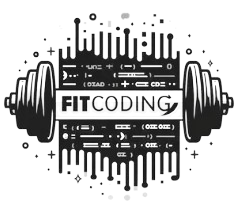Changing Landscape of Math Education
Math education is significantly transforming as traditional methods are augmented with technological advancements. This shift is essential in making mathematical concepts accessible and engaging for students of all ages. With platforms dedicated to enhancing interactive learning, students now have the opportunity to solve math questions using innovative digital tools that stimulate their interest and engagement. Such resources replace static textbooks, offering dynamic ways to engage with mathematical theories and practices.
Schools are progressively integrating technology to prepare students for a tech-driven future. By moving away from conventional education confined to static classrooms, these approaches promote a more inclusive and engaging environment where students can visualize complex mathematical scenarios. Integrating digital simulations and online problem-solving exercises allows students to explore mathematics beyond theory, making abstract concepts comprehensible through interactive experiences.
How Technology Is Transforming Classrooms
Technology catalyzes innovation in the current educational landscape, transforming how teachers deliver lessons and students interact with the material. AI-driven tutors and adaptive learning platforms enable teachers to customize instruction, tailoring educational materials to fit each student’s individualized pace and abilities.
Furthermore, these tools facilitate the demonstration of complex mathematical problems in more tangible ways. Interactive whiteboards, apps, and virtual lab simulations allow students to experiment and visualize concepts such as algebraic functions or geometrical projections. This interactive approach promotes critical thinking skills, encouraging students to apply their knowledge in both academic and real-world settings, thereby fostering a generation of problem solvers equipped for the challenges of tomorrow.
Personalized Learning Paths
Personalized learning represents an evolutionary step in education, reflecting a shift towards recognizing and accommodating individual learning styles. Software solutions that offer personalized learning paths are becoming pivotal in education today, allowing teachers to craft educational experiences that cater to individual learning paces and interests.
These tools allow for ongoing student progress assessment, enabling tailored feedback crucial for development. Understanding each student’s strengths and weaknesses can adjust educational pathways, ensuring personal growth. This approach guarantees that students remain engaged and motivated as they work through challenges comfortably, culminating in building their confidence and opening avenues to academic success.
Collaboration in Learning Through Digital Tools
Collaboration in education is more important than ever as workplaces increasingly demand teamwork and cooperative problem-solving skills. The advent of digital tools that facilitate collaborative learning environments has revolutionized education. Students from different places and backgrounds can now work together on projects in real-time because of platforms made for smooth communication.
These collaborative tools enhance communication skills and encourage cultural exchanges and holistic learning experiences. Students develop improved interpersonal skills alongside academic knowledge by working on shared goals and receiving peer feedback. This interactive process cultivates a spirit of cooperation and innovation, preparing students to succeed in a globalized world.
Challenges in Implementing Technology
Despite its benefits, incorporating technology in math education comes with significant challenges. One prominent issue is ensuring all students have equitable access to the necessary tools and connectivity. Socio-economic disparities can cause digital divides, leaving some students without the essential resources to benefit from these advancements.
Moreover, the successful implementation of technology requires comprehensive teacher training. Educators must be proficient in using new tools to integrate these effectively into their teaching. Institutionally driven initiatives focusing on professional development and teacher support are crucial in overcoming these barriers, ensuring all students reap the benefits of tech-enhanced learning.
Future Initiatives in Math Education
The future of math education is deeply rooted in embracing technological advancements, and strategies focused on inclusivity. For technology to be a truly transformative force, efforts must be made to address existing disparities, making digital resources accessible to all students, regardless of their backgrounds.
Furthermore, dedicated training programs and resources for teachers will play a crucial role in seamlessly adopting technology. By ensuring that educators are equipped with the knowledge necessary to harness digital tools effectively, schools can provide students with enriching educational experiences that are both engaging and comprehensive.
Bringing It All Together
The ongoing innovations in math education represent a promising pathway toward a more inclusive and practical approach to learning. By addressing existing challenges and leveraging the benefits of technology, students can access math education that is not only accessible but also deeply enriching.
As technology continues to evolve, a significant opportunity exists to equip students with the essential skills needed to thrive in an increasingly interconnected and digital world. Embracing these changes holistically will ensure future generations are not only mathematically adept but also ready to face the broader challenges of an ever-shifting global landscape.











